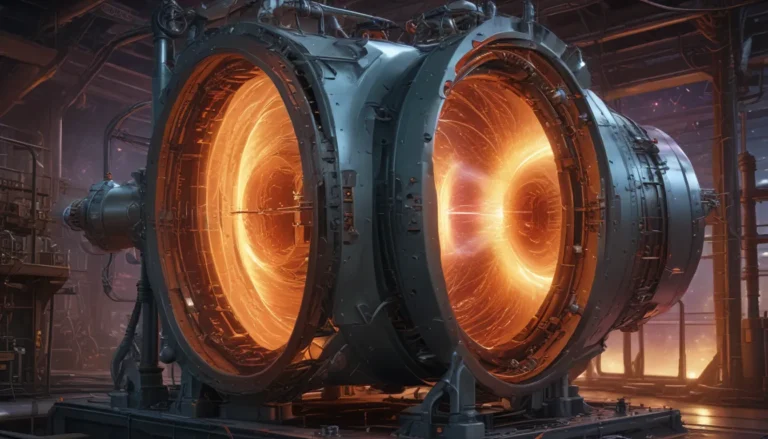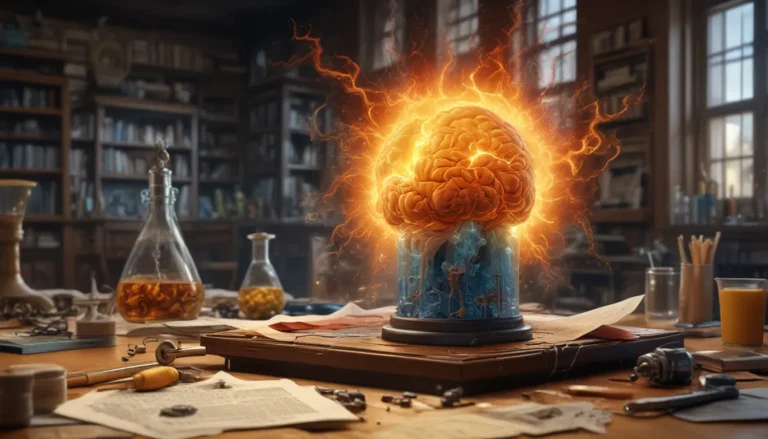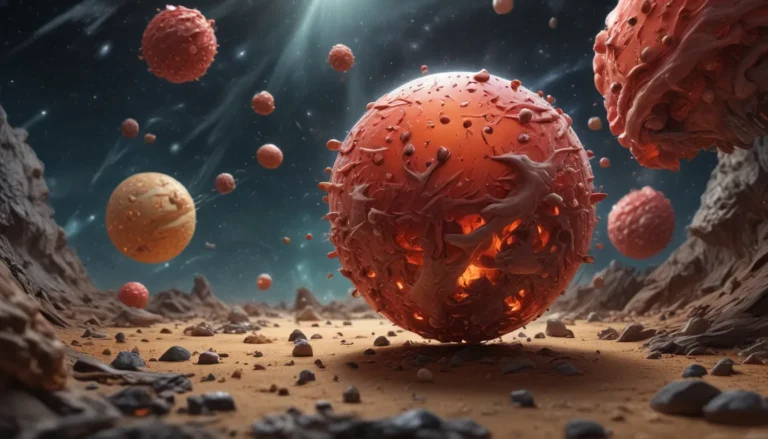A Note About Images: The images used in our articles are for illustration purposes only and may not exactly match the content. They are meant to engage readers, but the text should be relied upon for accurate information.
Radioactivity, a captivating and mysterious phenomenon discovered by Antoine Henri Becquerel in 1896, continues to mesmerize both scientists and the public with its complexity and significance. In this article, we will delve into the enigmatic world of radioactivity and explore eight captivating facts that showcase its broad impact on various fields, such as medicine, energy, and environmental science. Join us on this educational journey as we unravel the mysteries of radioactivity and discover its hidden nuances.
The Accidental Discovery of Radioactivity
In 1896, Henri Becquerel stumbled upon the phenomenon of radioactivity by accident while investigating the effects of uranium salts on photographic plates. This serendipitous discovery marked the beginning of a new era in scientific exploration, leading to revolutionary advancements that have shaped our understanding of the natural world.
The Natural Process of Radioactivity
Radioactive elements, such as uranium, thorium, and radium, naturally exist in the Earth’s crust and undergo spontaneous decay, emitting radiation in the form of alpha particles, beta particles, and gamma rays. This inherent process of radioactive decay forms the basis of radioactivity and its diverse applications.
The Dual Nature of Radioactivity: Harmful and Beneficial Effects
While excessive exposure to radiation can pose risks to living organisms, radioactivity also has beneficial applications in various fields. From medical treatments like radiation therapy for cancer patients to industrial uses and scientific research, the wide-ranging impact of radioactivity highlights its dual nature.
The Varied Half-Lives of Radioactive Elements
Each radioactive element possesses a unique half-life, which is the time it takes for half of its radioactive atoms to decay. These half-lives can range from fractions of a second to billions of years, allowing scientists to determine the age of rocks and artifacts through radiometric dating.
The Mutagenic Effects of Radioactivity
High levels of radiation exposure can damage DNA and lead to mutations, with both positive and negative implications. While radiation-induced mutations can be harmful, they also play a role in driving the process of evolution by introducing genetic variations and diversity.
Harnessing Radioactivity for Electricity Generation
Nuclear power plants utilize the energy released through nuclear fission of radioactive materials, such as uranium-235, to generate electricity. The heat produced during fission is used to produce steam, which drives turbines to produce clean and efficient electricity for cities and industries.
Addressing the Long-Term Challenges of Radioactive Waste
The safe disposal of radioactive waste remains a significant concern in the nuclear industry due to the long-term hazards posed by these materials. Proper storage and containment measures are essential to prevent environmental contamination and safeguard future generations from potential harm.
The Role of Radioactivity in Medical Diagnosis
Radioactive isotopes are instrumental in various medical imaging techniques, such as positron emission tomography (PET) and single-photon emission computed tomography (SPECT). These technologies use radioactive tracers to visualize and evaluate the functioning of organs and tissues in the human body, aiding in diagnosis and treatment.
As we uncover these eight enigmatic facts about radioactivity, it becomes evident that this natural process holds profound implications across different disciplines. From its accidental discovery to its diverse applications, radioactivity continues to intrigue and inspire advancements in science, energy, and healthcare.
Embracing the Mysteries of Radioactivity
In conclusion, radioactivity’s enigmatic nature continues to captivate scientists and the general public, leading to groundbreaking discoveries and innovations in various fields. With its ability to generate energy, drive research, and impact human health, radioactivity remains a source of fascination and significance in our quest for knowledge.
As we navigate the complexities of radioactivity, it is vital to approach its intricacies with caution and respect, leveraging its power for the greater good while minimizing potential risks. By understanding the principles of radioactivity and its diverse applications, we can harness its potential to drive progress and enhance our understanding of the natural world.
FAQs: Exploring Common Questions About Radioactivity
- What is radioactivity?
Radioactivity is the spontaneous emission of radiation from the nucleus of an unstable atom, resulting from radioactive decay processes.
- How was radioactivity discovered?
Radioactivity was discovered by Henri Becquerel in 1896 through his experiments with uranium salts and photographic plates.
- What are the different types of radiation emitted during radioactive decay?
The three main types of radiation emitted during radioactive decay are alpha particles, beta particles, and gamma rays, each with distinct properties and effects.
- What are the applications of radioactivity in medicine?
Radioactivity is used in medical imaging, cancer treatments, and sterilization processes, enabling precise diagnostics and targeted therapies.
- Is exposure to radioactivity dangerous?
High levels of radiation exposure can be harmful, causing tissue damage and increasing cancer risks, while low-level exposure can be managed safely.
- How do scientists protect themselves from radioactivity?
Scientists and workers in radioactivity-related industries use protective gear, specialized equipment, and safety protocols to minimize exposure risks.
- Can nuclear power be harnessed safely?
With proper regulations and safety measures in place, nuclear power can be harnessed safely to meet energy needs while mitigating risks to human health and the environment.
- How can radioactive waste be disposed of safely?
Radioactive waste is carefully stored and managed using methods like deep geological repositories and reprocessing to prevent environmental contamination and ensure long-term safety.
Unravel the surprising possibilities and complexities of radioactivity, where scientific curiosity meets real-world applications. Join us on this educational journey through the enigmatic world of radioactivity, where each discovery leads to new insights and innovations that shape our understanding of the world around us.






